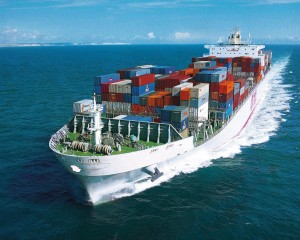Awarding Exemplary Exporters
October 21 marks Iran’s national day of exports; and in continuation of the five-year tradition, 36 companies with exemplary exports were praised and congratulated by the Iranian Export Manager with commendation plaques and cash prizes.

This year’s exemplary exporters were: Ahjar Zagros Manufacturing & Commercial, Almahdi Aluminium Corporation, Bahman Gasht Tour & Travel Agency, Iran Pharmaceutical Industries (Pharmieco), Marjan Tile, Mirzazadeh Trading, Pamchal Asia, Sarcheshmeh Copper Investment, Merrat International Trading Ltd., Novin Alloys Semnan, Mammut Industrial Group Tehran, Behshahr Industrial, Yazd Baf, Arta Industrial Group, Tolypers, Ninoo Industrial, Hoor Baher, Pars Tire, Momtaz Sahand Industrial Production, Afroozkar Tabriz Leather, Doodeh Sanati Pars, Dasht Neshat, Payam Shoe Manufacturing, Varziran, Takceram Tile Manufacturing, Mazinoor Lighting Industries Inc., Faravardehaye Khavarmianeh Exporting, Fareed Shargh Trading, Bushehr Atlas Trading, Toos Charme Shargh, Rishmak Product & Export, Ahmad Rahimzadeh & Son’s Joint Venture, Mir Jalili Brothers Trading, International Tohid, Dena Rahsaz Construction, and Shimbar.
During the ceremony speeches were delivered by Export Manager, and before him, Mohammad Shariati, Manager of Commerce.
The only way to save Iran’s economy is by moving away from a single product trade (oil) towards trade diversification; and there are many obstacles along the way. In the first six months of Iran’s calendar year (from 21 March to 21 August 2003) the country’s non-oil exports equaled $3.975 billion. From this figure $2.817 billion related to the export of goods and $1.157 billion to the export of services. This amount of export has realized 98.5% of the quantitative goals of the Third Development Plan.
Exports in the first half of Iran’s calendar year have enjoyed a 23% growth compared to exports in the same period of the preceding year. The value of these exports has been the approximate equivalent of all exports achieved throughout the entire year of 1997.
The makeup of non-oil exports has been 65.2% industrial and petrochemical products, 20.4% agricultural products, 10.5% hand-woven and handicrafts and 3.9% of exports related to mining materials. This is while 46.5% of all service exports related to the tourism sector, 7.7% to technical and engineering services, 45.3% was claimed from transit and transportation of goods, and 0.5% related to other services.
The current year has seen the implementation of 14 projects for the achievement of the export goals of the Third Economic Development Plan. These projects include rewarding exports with added value, a 10% reward for textile and leather exports, assisting non-governmental export promotion funds, implementing a comprehensive plan for promoting non-oil exports, expanding and strengthening export-orientated production syndicates as well as developing export terminals.
In the three and half years that have passed since the beginning of the Third Development Plan, $15.4 billion worth of non-oil products have been exported outside the country, which adds up to 94.2% of the quantitative goals set out in the plan. This is while only 66% and 58% of the goals set out in the first and second development plans were realized.
Even though problems with bureaucracy and legal deficiencies have been largely solved for the export sector and exporters have been provided with a lot of facilities, there are still obstacles in the way of entering big markets, most important of which are the new markets emerging in Afghanistan and Iraq. If these issues are addressed there will be a bright outlook for the country’s exports.
Another program which will be implemented in the not-so-far future is the comprehensive plan for promoting the country’s exports. The draft of this plan has been produced by the secretariat of the High Export Council, and will come into effect once it has been approved by the body.
This program projects the long-term outlook of exports and the framework envisaged for this plan exceeds beyond five years and consists of some fundamental structural reforms.
Some other programs which will be implemented in the near future are the establishment of Iran’s International Trade Promotion Organization, drafting a plan for creating strong export-oriented companies, the continuation of policies encouraging exports and changing direct subsidies into indirect subsidies and support. It is hoped that each one of these undertaking will be a step in the direction of boosting the country’s exports.
Leading the pack of the 36 exemplary exporters, were the following companies.


